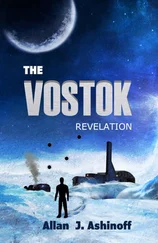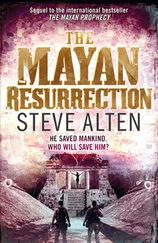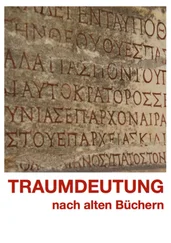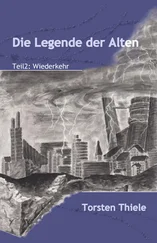“Yes,” I replied, “but I bet you’d care if a million years from now some archaeologist claimed your ancestors were English.”
“Or jackasses,” muttered Ben, a bit too loud.
“Excuse me, friend, but this is an A and B conversation, so C yer way oot of it.”
I stepped in between them, guiding True to an aluminum vat filled with pea soup. I ladled us each a mugful while he filled our other cups with hot chocolate. “Ease up with the sexual connotations, big guy.”
“I’m jist playing. Whit are ye doing?”
“I’m not doing anything.”
“Oh, please. To be honest, Susan, I’m more interested in intraspecies communication, specifically among orca . Maybe ye can tutor her later in yer tent.”
“She’s a grad assistant studying to be a marine biologist. We were talking shop.”
“Sure ye were. Jist do me a favor, and next time ye engage a woman not my sister in conversation, ask yerself if yer tryin’ tae impress her with that big brain of yers, or the wee small fella dangling between yer legs.”
* * *
Scientists, academics, and technicians from China, Australia, the United States, Canada, New Zealand, Britain, Germany, Japan, and France filed into the Army tent, quickly claiming one of the thirty folding chairs placed in a semi-circle facing a dry erase board. There may have been delegates present from other countries, but those were the only flag patches on ski jackets I could see from my vantage.
Missing from the meeting were members of the Russian Antarctic Expedition.
Ben and I found empty seats in the back, next to a large satellite photo of Lake Vostok taped to an easel. A white circle marked the location of the drone.
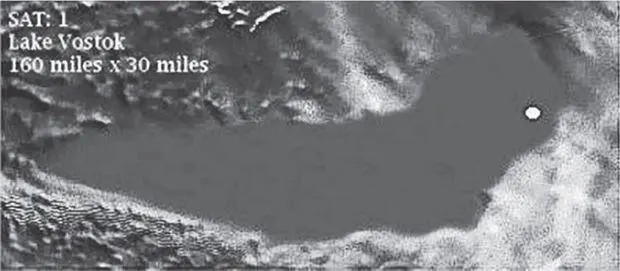
Ming was in a heated discussion with someone on her walkie-talkie. Ending the conversation, she took her place at the front of the tent. “Good afternoon. Dr. Jokinen is in the lab, finishing the analysis of water samples taken two days ago from Valkyrie Unit-1. While we are waiting, I’d like to introduce Dr. Zachary Wallace, our lead marine biologist, and Captain Ben Hintzmann, our submersible pilot.”
Ben and I gave curt waves from our seats.
A silver-haired American turned to face us. “Kevin Coolidge, United States Geological Survey. With all due respect, Dr. Liao, most of us here agree it’s way too early in the game to be sending a manned submersible into Vostok. NASA spent a lot of R and D money to develop their fleet of ROVs, as I’m sure these other marine science foundations have as well. Why risk your life and the lives of these two gentlemen when a sortie of drones can be deployed to cover a far larger area and bring back ten times the amount of raw data?”
Heads nodded in agreement.
Ming Liao seemed unaffected by her mutineers. “Dr. Coolidge, in preparing for this mission, I’ve formed a basic understanding of how remotely operated vehicles are designed. There are two forces in play that affect the stability of any object immersed in water: the center of buoyancy and the center of gravity. The distance between the two determines the vehicle’s ability to remain upright, the drone’s neutral buoyancy being a key factor in maintaining its maneuverability. It is a delicate balance and an important one. A bottom-crawling ROV that cannot sink is as useless as a drone that cannot maintain neutral buoyancy.”
“Appreciate the lecture, Dr. Liao, but let me assure you, these ROV’s were thoroughly field tested before they were shipped to Antarctica.”
“Yes, but they were tested in freshwater tanks. Preliminary lab results indicate Lake Vostok is a hypersaline environment.”
The news stunned the crowd, setting off a dozen side conversations.
The USGS administrator whistled for quiet. “How the hell is that possible? This is an inland rift lake, at least partially fed by meltwater.”
A female scientist in a white lab coat and orange parka entered the tent.
Ming waved her to her side. “Dr. Helmi Jokinen is overseeing the analysis of subglacial lake chemistry. Dr. Jokinen?”
The Finnish biologist looked like a deer caught in headlights. “Yes, sorry for the delay. To respond to Dr. Coolidge’s question, Lake Vostok is situated on a mineral bed. Residual salts from ancient oceans have rendered it a hypersaline chemocline. For those of you giving me strange looks, chemoclines are found in meromictic lakes — lakes with layers of water that do not intermix. The culprit in the case of Vostok is the presence of geothermal vents that release superheated mineral waters from out of the East Antarctic rift. Because of these vents, Vostok’s waters run warmer the deeper you go.”
I glanced at Dr. Coolidge, who seemed caught between frustration and an attraction for the Scandinavian scientist. “If you could give us the density readings, that would help.”
“Yes, well, the density of fresh water to which your drones were set was 1.00 gram per milliliter. A typical density for salt water is 1.03 grams. The sample we drew from Lake Vostok measured 1.07 grams per milliliter. In short gentlemen — and ladies — as configured, your drones don’t possess enough ballast to sink in this particular saltwater environment.”
The USGS representative shook his head as he pulled his cell phone from his jacket pocket and turned his back to the biologist. “Gene, it’s Kevin. We got us a major clusterfuck out here under the dome. Lab reports indicate Vostok is salt water. Contact NASA and tell ’em they need to recalibrate the ROVs’ buoyancy gradients using water density markers set at 1.07 grams per milliliter.”
Dr. Jokinen waited awkwardly while similar calls were made in half a dozen different languages. “For what it’s worth, Dr. Coolidge, I suspect the Russians already knew this.”
“Of course they knew it, only someone decided not to invite them to the party.”
Ming smiled curtly, her almond eyes livid. “Is that all, Dr. Jokinen?”
“No, ma’am. The Russians and other experts had assumed Lake Vostok to be an oligotrophic extreme environment, meaning one void of nutrients. In fact the exact opposite appears to be true. Upon entering the lake, the Valkyrie drone passed through a brown algae field commonly associated with kelp. So far we’ve identified five different genera of kelp that trace back to the Miocene era and are most likely being nourished by hot springs flowing out from the geothermal vents. Two of the genera— Nereocystis and Macrocystis —are fast growers known to produce dense kelp forests along the coast of Norway, flourishing in water temperatures between forty-three and fifty-seven degrees Fahrenheit. These kelp forests function as a food source for tens of thousands of invertebrates, not to mention thousands of aquatic species. To say the least, this is a huge discovery, the foundation of what could very well be a flourishing subglacial food chain.”
With Dr. Jokinen’s words, the aura inside the tent seemed to change. All eyes fixed on Ming Liao, awaiting her orders.
“Do what is necessary to re-ballast your drones. Dr. Wallace, Captain Hintzmann, get some rest. Our submersible is scheduled to make its first descent in the morning.”
“I give myself very good advice, but I very seldom follow it.”
— Lewis Carroll
Try as I might, I couldn’t sleep.
Wrapped in my sleeping bag atop a nest of blankets, alone in my tent yet at the mercy of lights and voices and the occasional echoing clang of construction, I could not shut down my mind.
How did Neil Armstrong manage to sleep the night before his Apollo 11 launch? Was he on caffeine when he took his historic walk on the moon?
Читать дальше


